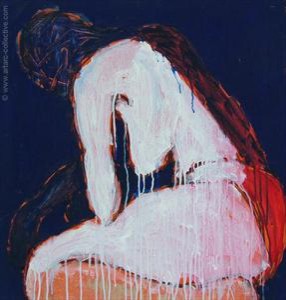
Kainebi Osahenye (1964):
“We also go through fire everyday in this country, like gold being subjected to fire for refinement, to get to where we are going.”
Pleasure and Pain, 2003.
About:
(From Nigeria Daily News, June 2011).
A visit to his studio recently reminded me of an iron-bender or blacksmith’s workshop, instead of a painter’s space. Instead of brushes and paints, you have to walk gingerly around the spacious but cluttered studio. Hard objects abound, like tiny nails, staple guns, burnt and sawed cans, hammers, glue-gun and metal in all forms of jagged-nature.
Osahenye says he is exploring the human body in an unusual figurative abstraction. He is re-examining it as a beautiful essence that doesn’t have to be necessarily perfect, but rather beautiful in a poetic and imperfect manner.
To confirm this statement, a large piece called ‘Interaction of Body and Spirit’ has a reclining female nude, mangled and deformed yet elegant in her repose. In the brokenness of bits and pieces of found and collected objects, Osahenye finds a perfect whole by re-assembling these materials to a state of unnaturalness.
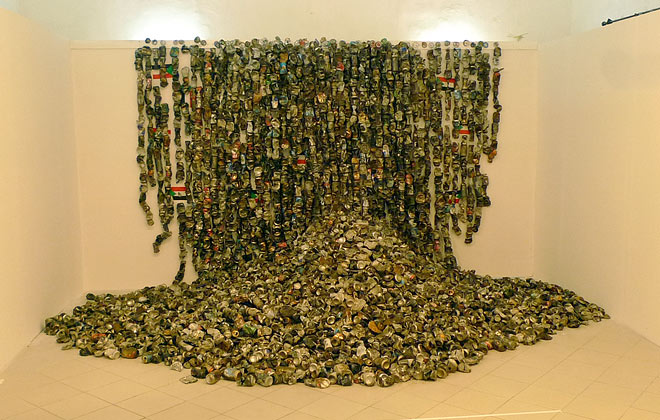 Installation, Da’Art, 2010.
Installation, Da’Art, 2010.
Multiple meanings
In explaining some of the parts of the body as related to the mundane, Osahenye says the head is the engine room that controls the other parts of the body, as in ‘Afro Love’, which is a almost like a self-portrait. If you think the artist with a super-size sense of humour is talking about just the human body alone, you have to think twice when he tells you that, “Our government has different parts and unless there is a proper alignment of those differences, there will be no progressive functionality.”
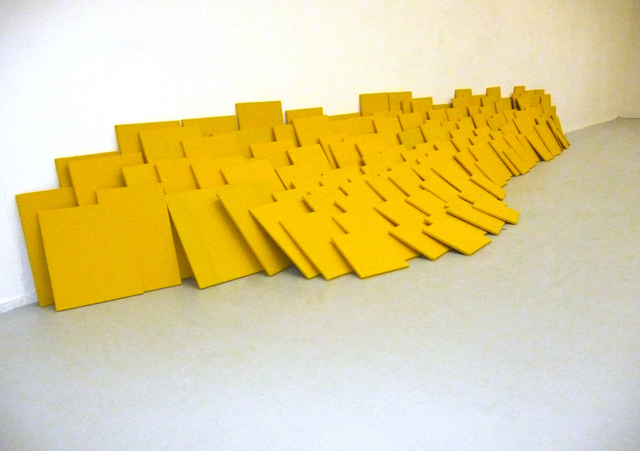
Echos of City, 2011.
In that case, works in Body Parts have multiple meanings that the viewers have to extract, one layer at a time.
Asked about the visible dominant yellow and white lines drawings that are inherent in the large metal works, the artist claims it is his way of returning to the roots of art and its relativity to human anatomy and physiology – in simpler terms, drawing is the foundation of any art training.
Yet, Osahenye in his usual way, moves far from the ordinary in the way the soft yellow lines co-exist with hard garbled metal to form a bent-over woman in ‘Lover of Pleasure’. And he is quick to tell me that ideas are more important to him than materials in his entire creative process.
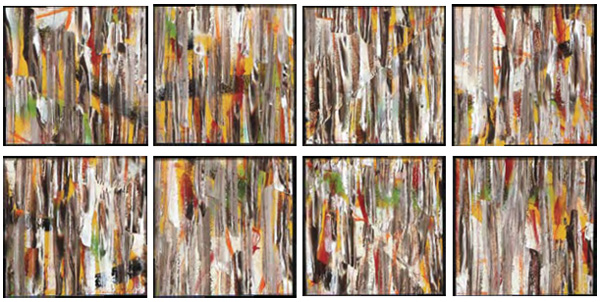 Figurative Expressions, 2007.
Figurative Expressions, 2007.
Carrying ideas for a long time enables him to conjoin issues of varying parts – such as consumerism, globalisation, and environmental issues in one painting. He is interested in the discarded containers of globally consumed goods and as he puts it – “These materials may have caused environmental hazard elsewhere, but I retrieve them to reinterpret them and give them a second life, a kind of heaven, especially for the burnt cans.”
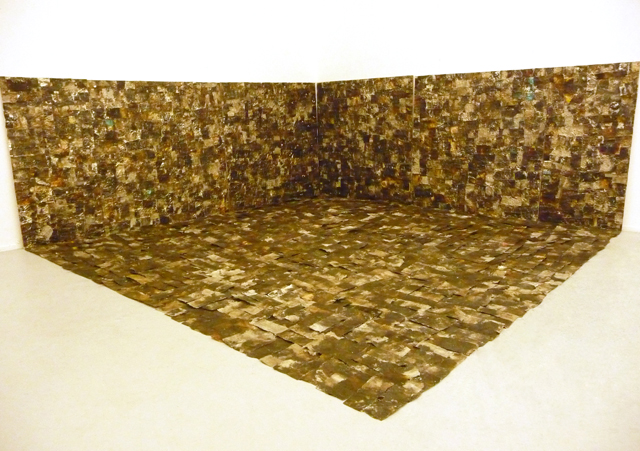
Redemption, 2012.
The work process in attaching these parts to make a whole is a tedious one. He cuts, nails and basically does everything by hand through manual labour. Osahenye says he enjoys constructing and making things with his hands, hence he doesn’t argue when his studio is referenced as a workshop.
Anguish. Pain. Blaze
Why burn almost everything before using them? I asked him. He tensed and angled his head for a minute before exploding – “Anguish. Pain. Blaze. Sometimes as human we are scorched by the things friends, family members or neighbours do to us – such things can be very painful and hurtful. We also go through fire everyday in this country, like gold being subjected to fire for refinement, to get to where we are going. I also think of my Africaness in this respect, because when I burn the cans it gives the metal a different tonality – which I explored in the Brown Skin series.”
 Untitled, 2009.
Untitled, 2009.
One of the most interesting pieces in the studio is ‘Under the Influence’, which is bordered by cans that did not go through Osahenye’s fire. He says he decidedly left the logos and brands visible because of the way we are influenced by what surround us – “we are consumed by what we consume.”
By being himself and doing what makes him happy for so long, Osahenye has been able to sustain and maintain himself as an artist whose works are sought after by many collectors and critics. Many of his works have been referenced in reputable art history books around the globe.
Commenting on his style, he argues that “Certain elements get transferred throughout my various paintings and the thing inside me grow as I grow because one’s true style comes from within, a certain internal radiation. I am an artist and a passionate one for that matter. I love what I do and I hope that can incur a change and make the world a better place. I decided to be a studio artist right from day one. I sorted it all out within myself to satisfy myself first. I don’t seek to please collectors or galleries when making my art.”
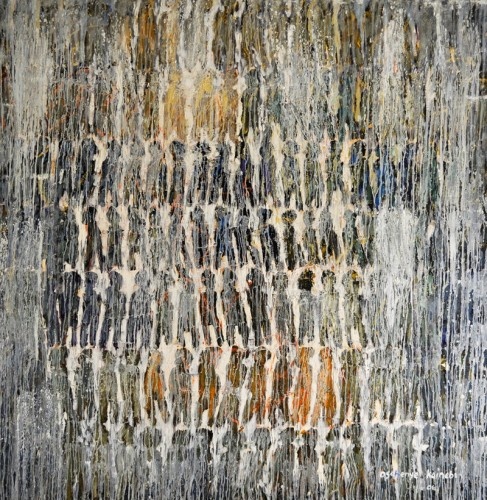 Many Years of Erasure.
Many Years of Erasure.
Osahenye advised that to be a true artist, one has to be true to self; it is either you sell your soul to the devil and come out with half-realised artworks, or you stand your ground and be the best.
He laments over the way many of his contemporaries have pandered to the market by churning out what collectors want to buy, hence they keep doing the same thing over and over.
“This is painful because I know many of them can push the brush beyond the ordinary.”
